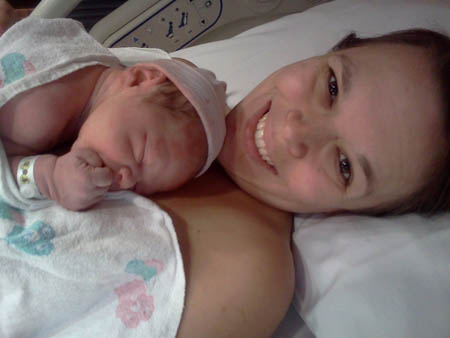BIRTHING CENTER & HOME BIRTH MIDWIFE
@ Arbor Square, Austin, TX
(512) 636-3661 fax: (512) 727-0627
#1 in Austin Area for Personalized Care – Most Insurance Accepted!
Is a Home Birth by a Midwife Safe?
by Geradine Simkins, CNM, MSN, Executive Director, Midwives Alliance of North America
In today’s peer-reviewed Journal of Midwifery & Women’s Health (JMWH), a landmark study** confirms that among low-risk women, planned home births result in low rates of interventions without an increase in adverse outcomes for mothers and babies.

This study, which examines nearly 17,000 courses of midwife-led care, is the largest analysis of planned home birth in the U.S. ever published.
The results of this study, and those of its companion article about the development of the MANA Stats registry, confirm the safety and overwhelmingly positive health benefits for low-risk mothers and babies who choose to birth at home with a midwife. At every step of the way, midwives are providing excellent care. This study enables families, providers and policymakers to have a transparent look at the risks and benefits of planned home birth as well as the health benefits of normal physiologic birth.
Of particular note is a cesarean rate of 5.2%, a remarkably low rate when compared to the U.S. national average of 31% for full-term pregnancies. When we consider the well-known health consequences of a cesarean -- not to mention the exponentially higher costs -- this study brings a fresh reminder of the benefits of midwife-led care outside of our overburdened hospital system.
Home birth mothers had much lower rates of interventions in labor. While some interventions are necessary for the safety and health of the mother or baby, many are overused, are lacking scientific evidence of benefit, and even carry their own risks. Cautious and judicious use of intervention results in healthier outcomes and easier recovery, and this is an area in which midwives excel. Women who planned a home birth had fewer episiotomies, pitocin for labor augmentation, and epidurals.
Most importantly, their babies were born healthy and safe. Ninety-seven percent of babies were carried to full-term, they weighed an average of eight pounds at birth, and nearly 98% were being breastfed at the six-week postpartum visit with their midwife. Only 1% of babies required transfer to the hospital after birth, most for non-urgent conditions. Babies born to low-risk mothers had no higher risk of death in labor or the first few weeks of life than those in comparable studies of similarly low-risk pregnancies.
Importantly, this study also sheds light on factors that may increase risk. These findings are consistent with other research on pregnancy complications, but the numbers of these pregnancies were low in the MANA Stats dataset, making it impossible to make clear recommendations. This article from Citizens for Midwifery contains important information to share with families who are contemplating their birth options and weighing their individual risks and benefits.
This study is critically important at a time when many deeply-flawed and misleading studies about home birth have been receiving media attention. Previous studies have relied on birth certificate data, which only capture the final place of birth (regardless of where a woman intended to give birth). The MANA Stats dataset is based on the gold standard -- the medical record. As a result, this study provides a much-needed look at the outcomes of women who intended to give birth at home (regardless of whether they ultimately transferred to hospital care). The MANA Stats data reflects not only the outcomes of mothers and babies who birthed at home, but also includes those who transferred to the hospital during a planned home birth, resolving a common concern about home birth data.
This study adds to the large and growing body of research that has found that planned home birth with a midwife is not only safe for babies and mothers with low-risk pregnancies, but results in health and cost benefits that reach far beyond one pregnancy. We invite you to share this news in your communities, and join the conversation on our Facebook page, Twitter, and Pinterest.
We are grateful to the ongoing support of the Foundation for the Advancement of Midwifery, which has been a major funder of the MANA Statistics Project.
** Note added 12:33 EST when the issue was published:
- Cheyney M, Bovbjerg M, Everson C, Gordon W, Hannibal D, & Vedam S. Outcomes of care for 16,984 planned home births in the United States: The Midwives Alliance of North America Statistics Project, 2004-2009.
- Cheyney M, Bovbjerg M, Everson C, Gordon W, Hannibal D, & Vedam S. Development and validation of a national data registry for midwife-led births: The Midwives Alliance of North America Statistics Project 2.0 dataset.
Birth Center & Home Births
12885 Research Blvd.
Suite #202
Austin, TX 78750
